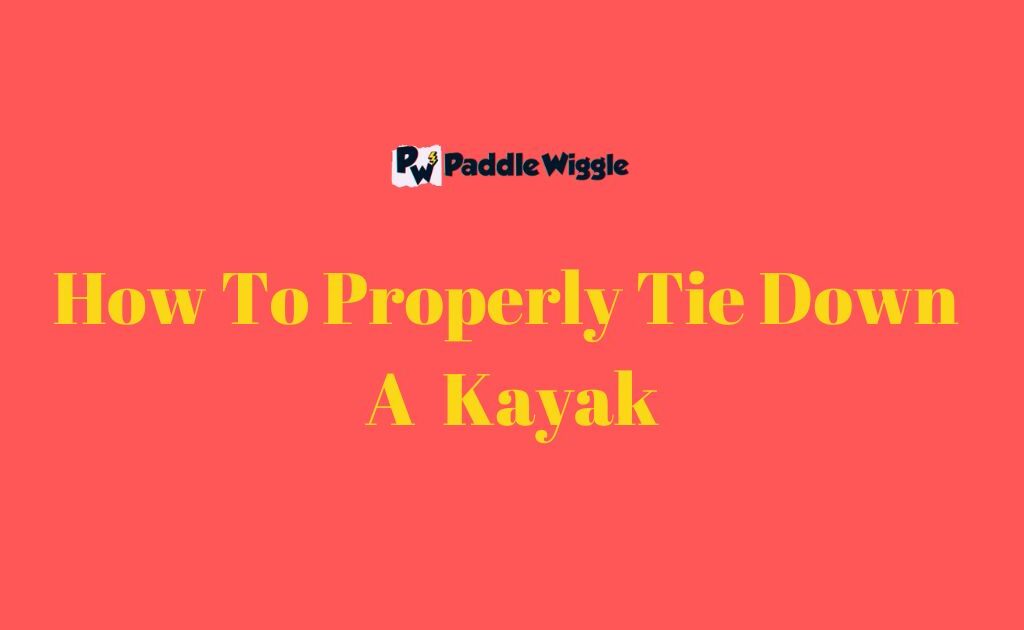When it comes to water sports, the choice between rowing and kayaking can be a delightful dilemma. Both activities offer unique experiences and are enjoyed by enthusiasts worldwide.
But have you ever wondered which one is best for you, between kayaking and rowing? And what sets them apart?
Kayaks are known for their versatility and maneuverability. With a double-bladed paddle, you can glide through serene lakes, navigate narrow rivers, or tackle exciting rapids. Kayaking offers a solo or tandem experience, and its sleek design allows you to explore various water environments easily.
On the other hand, row boats provide a different kind of adventure. They require a single oar and a rhythmic rowing motion that propels the boat forward. Rowing is often a team activity, with rowers synchronizing their strokes to glide gracefully across the water. Rowboats are ideal for leisurely outings, fishing trips, or enjoying a relaxing day on the lake.
In the following sections, we’ll dive deeper into kayaking and rowing, exploring their benefits, techniques, and gear. Whether you prefer the tranquility of kayaking or the rhythmic rowing motion, this comparison will help you pick the water sport that suits you best.
Contents
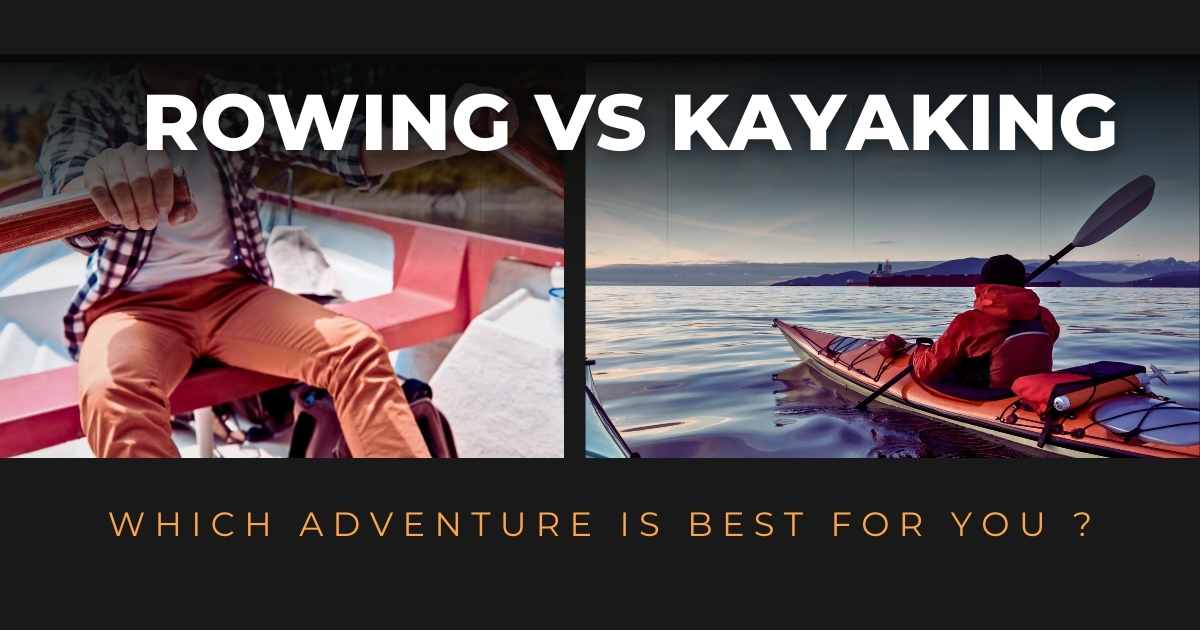

Kayaking Vs Rowing: How Do They Feel?
Picture this: you’re sitting in a sleek, narrow boat, paddle in hand, ready to take on the water. As you push off from the shore and start paddling, there’s an immediate rush of excitement. The feeling of gliding through the water in a kayak is exhilarating! You can feel the cool splash of water against your skin as you navigate through gentle waves or challenging rapids.
You use a double-bladed paddle in kayaking, while rowing involves a single oar. Rowing has a specific motion to move the boat forward, while kayaking gives you more freedom to steer. Both sports provide excellent full-body workouts and are suitable for beginners with the right guidance.
Kayaking offers a unique blend of tranquility and adventure. Whether you’re peacefully exploring calm lakes or tackling fast-flowing rivers, the experience is unmatched. It’s like being one with nature as you paddle your way through stunning landscapes. Plus, kayaking allows you to get up close and personal with wildlife that may be hiding along the shores or swimming beneath your boat.
But it’s not just about the scenery; kayaking also provides an excellent workout for your muscles. With each stroke of the paddle, you engage your core muscles, arms, and back. Your legs help stabilize and steer the kayak while your upper body powers through the water. It’s a full-body workout that leaves you feeling strong and accomplished.
The Rhythmic Motion And Teamwork Involved In Rowing
Now, let’s talk about rowing, which is another great way to explore the water. When you row, it’s all about working together with your teammates. You sit in a long, skinny boat called a shell or crew, and everyone uses oars to move the boat.
Rowing feels special. It’s like being part of a perfectly working machine where every little action matters. As you smoothly move across the water with everyone rowing together, you feel a strong sense of unity in your team. Every pull of the oar needs to be done at just the right time to keep the boat going and everyone working in harmony.
Rowing also offers a different connection with nature.
Specialization And Boat Types, And Design: Row Boat Vs Kayak
In the world of water sports, there are many different kinds of boats for different jobs and places. When we look at rowboats and kayaks, we need to consider what each one is good for and what makes them different.
Specialized Row Boats For Specific Purposes
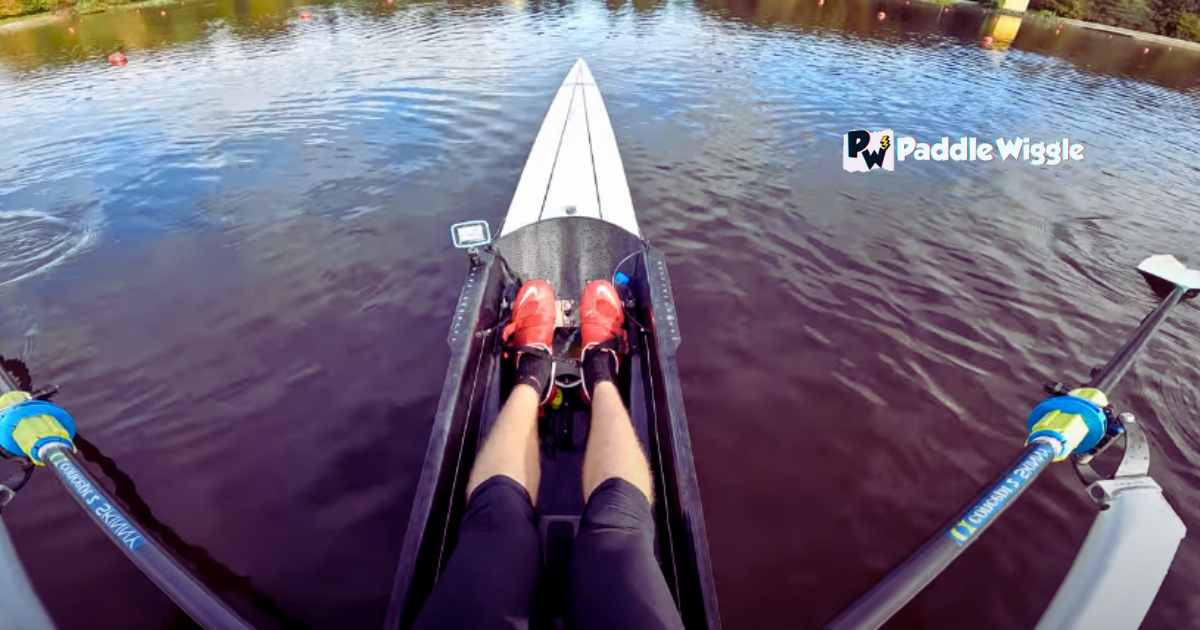

Rowboats come in different variations designed for specific purposes. One such variation is sculling, where rowers use two oars simultaneously. This technique requires a high level of skill and coordination. On the other hand, sweep rowing involves rowers using one oar each. This technique is commonly seen in competitive rowing events.
Various Designs Of Kayaks For Different Environments
Kayaks, on the other hand, have various designs tailored to different environments. For example, sea kayaks are specifically built to navigate through ocean waters with stability and efficiency. They often feature a longer hull shape for better tracking in open water conditions.
On the other hand, whitewater kayaks are made to handle speedy rivers with lots of rapids and things in the way. These kayaks are usually shorter and can turn easily to get through rough water.
Factors Influencing Boat Design
Several factors influence the design of both row boats and kayaks. The materials used play a significant role in determining their performance characteristics. For instance, fiberglass or carbon fiber construction can provide lighter weight and increased rigidity compared to traditional wooden boats.
Hull shape also plays a crucial role in boat design. A flat-bottomed hull provides stability but sacrifices speed, while a v-shaped hull allows for faster speeds but may be less stable in rough conditions.
Comparing Features For Different Conditions
When comparing row boats and kayaks, it’s essential to look at the features that make each type suitable for particular conditions:
- Rowboats excel in providing power through oars due to their longer length and ability to generate more force. This makes them ideal for long-distance rowing or racing scenarios.
Racing And Competitive Opportunities: Row Boat Vs Kayak
Rowboat racing (called regattas) and kayak racing (known as sprints) are popular sports that bring athletes worldwide. We can look at the differences between these two sports by considering team races, individual races, big events like the Olympics, and the special training needed for each sport.
Thriving Competitive Scenes
Rowboat racing, also known as regattas, offers a fantastic opportunity for teamwork and coordination. In this sport, teams of rowers work together to propel their rowing shells using oars. The synchronized movements required in rowing create a sense of unity among team members as they strive for victory. On the other hand, kayak racing focuses on individual performances in sprint races. Athletes paddle their kayaks vigorously to achieve top speeds and outpace their competitors.
Major Events
Rowboat and kayak racing are part of big global events like the Olympics. These are very important competitions where athletes from all around the world come to win gold medals. In the Olympics, rowing teams represent their countries and compete using oars. In kayak races, it’s about individuals who paddle surf skis or traditional kayaks in exciting sprints.
Team-Based Row Boat Races Vs Individual Kayak Competitions
In team rowboat races, it’s all about working together smoothly. Each person in the team has a job, and they need to do it just right to do well. They have to row in a way that’s very precise and in time with each other to go as fast as possible. On the other hand, in individual kayak races, it’s all on the athlete. They have to use their own skills and strength. They need to paddle very precisely while also keeping their balance and being quick throughout the race.
Training Techniques
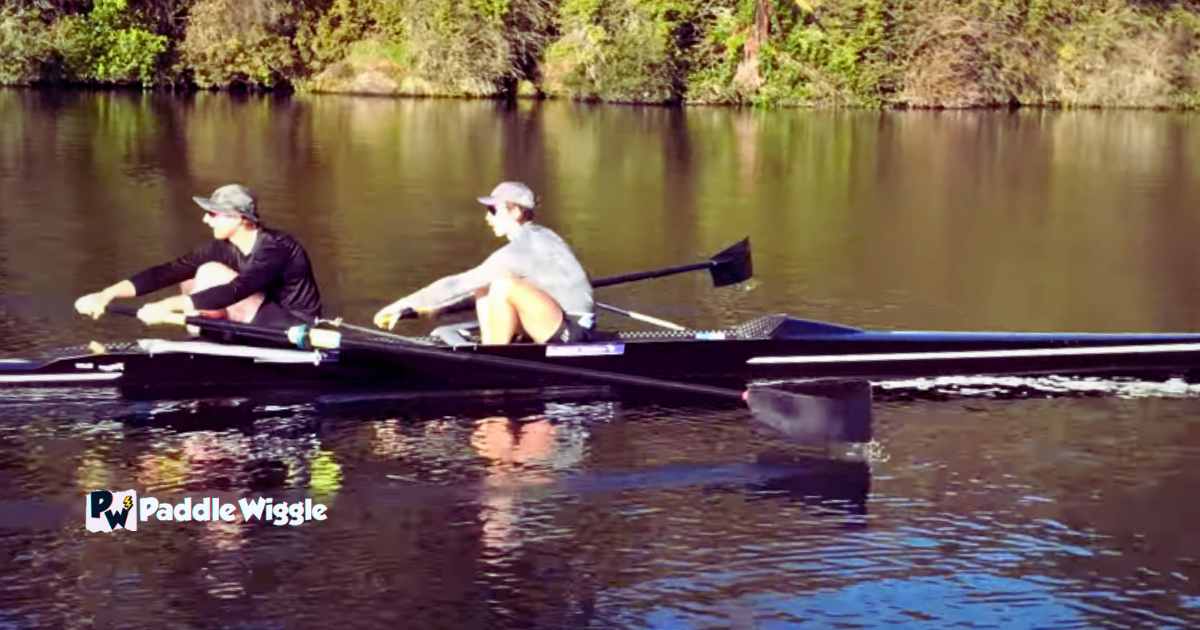

Training for row boat racing often involves a combination of cardiovascular fitness, strength training, and technique refinement. Rowers use rowing machines to simulate the motion of rowing on water and build endurance.
Speed Comparison: Is Rowing Faster Than Kayaking?
Several factors come into play. Let’s take a closer look at how technique, equipment, water conditions, boat design, and individual strength and endurance can influence the speed potential of row boats and kayaks.
Evaluating Speed Potential
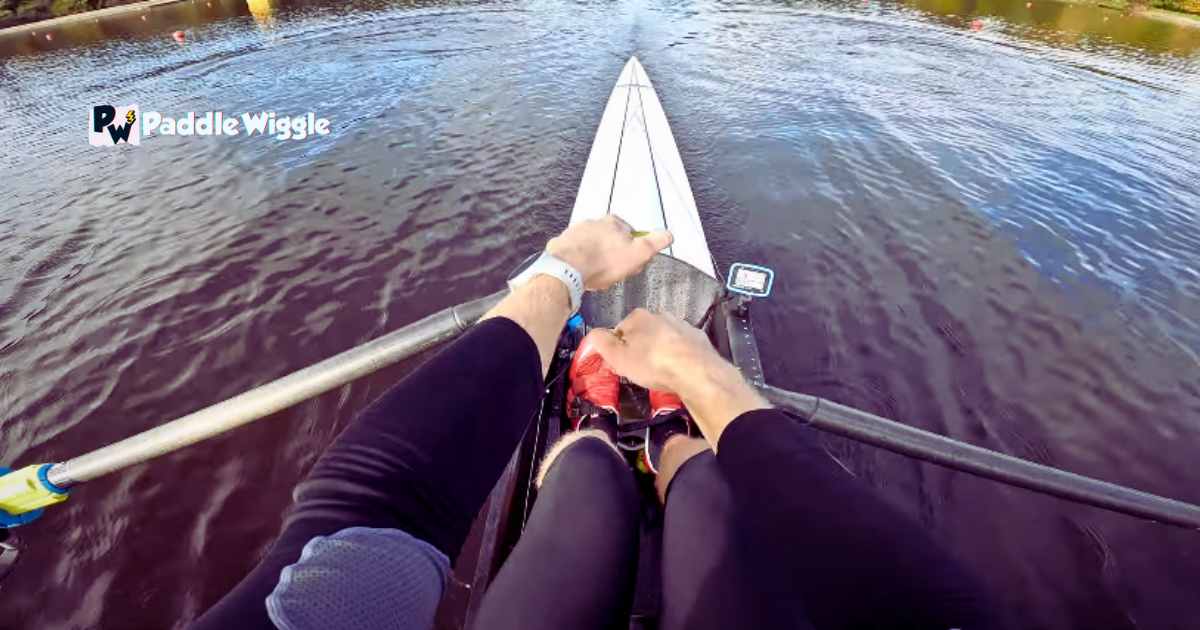

We must consider various elements to determine which is faster between rowing and kayaking. Technique plays a crucial role in maximizing speed for both activities. Skilled rowers and kayakers know how to efficiently use their paddles or oars to generate power and propel themselves through the water.
The type of equipment used can affect speed. Rowboats typically have longer oars that allow for more leverage, while kayaks have shorter paddles that provide quick maneuverability. The size and weight of the boat also impact its speed potential.
Water conditions are another important factor to consider. Smooth waters with minimal waves or currents generally favor faster speeds for both row boats and kayaks. However, rougher waters can pose challenges and slow down progress.
Average Speeds Achieved
Experienced rowers can reach impressive speeds in row boats. On flatwater courses, elite rowers can maintain an average speed of around 8-12 miles per hour (13-19 kilometers per hour). In comparison, skilled kayakers can achieve similar speeds on calm waters.
It’s worth noting that these average speeds are influenced by various factors such as distance covered and time taken. Longer distances may result in slightly slower average speeds due to fatigue setting in over time.
Impact Of Boat Design


The design of a boat greatly affects its speed potential. Rowboats are built for stability and efficiency in long-distance races. Their sleek hulls minimize drag while allowing for smooth gliding through the water.
On the other hand, kayaks are designed for agility and maneuverability. Their narrow hulls and pointed bows allow for quick turns and increased speed at shorter distances.
Storage And Transportation: Row Boat Vs Kayak
One important factor to consider is the storage and transportation requirements. Let’s delve into the space needed for storing row boats and kayaks and the available transportation options.
Space Requirements For Storing Row Boats And Kayaks
Rowboats and kayaks differ in size and shape, directly affecting their storage needs. Rowboats are generally larger and bulkier compared to kayaks. They require ample space for safekeeping when not in use.
- Row Boats: These sturdy vessels often necessitate dedicated storage areas or sheds due to their size. They may require more vertical clearance if equipped with masts or oars that cannot be detached easily.
- Kayaks: On the other hand, kayaks are more compact and can be stored in various ways. They can fit inside garages and basements or even hang on walls using specialized racks.
Options For Storage Facilities
To ensure the longevity of your watercraft, you may need additional storage facilities beyond your own property. Here are a few options:
- Marinas or Boat Clubs: These establishments offer designated spaces where you can store your row boat or kayak securely.
- Self-storage Units: Renting a self-storage unit provides a convenient option for keeping your watercraft safe from harsh weather conditions.
- Homeowners’ Associations (HOAs): Some HOAs provide communal storage areas specifically designed for watercraft.
Transporting Row Boats Vs Kayaks
Transportation is another aspect to consider when choosing between row boats and kayaks. The ease of moving these watercraft from one location to another varies based on factors such as weight, size, and portability.
Transporting A Row Boat
Due to their larger size and weight, transporting row boats can be quite challenging without proper equipment. Here are some options to consider:
- Requires a vehicle with roof racks or a dedicated trailer.
- Loading and unloading can be physically challenging.
- Rowboats are space-intensive for storage.
- Versatile but less convenient for spontaneous trips.
Transporting A Kayak
Kayaks are generally smaller and lighter, making them more manageable to transport. Many can be carried on roof racks or in the bed of a pickup truck.
- Utilizes roof racks, kayak racks, or specialized trailers.
- Loading and unloading are generally easier.
- Kayaks are space-efficient for storage.
- Offers greater convenience and versatility for individual transport and spontaneous trips.
Solo Vs. Team Activity: Row Boat Vs Kayak
Deciding whether to do water sports like rowing and kayaking alone or with a team is an important choice. Both rowboats and kayaks have special things to offer, whether you want to paddle or row by yourself or with friends.
Let’s explore this further.
Social Aspect Of Rowing As A Team Sport
Rowing in a team, whether it’s on a calm lake or in a competitive race, can be an exhilarating experience. When you hop into a row boat with your crew, you’re not just embarking on physical activity but also forming connections and building teamwork. The social aspect of rowing allows you to bond with others who share the same passion for being out on the water.
Pros:
- You get to work together towards a common goal.
- It fosters communication and coordination among team members.
Cons:
- Differences in skill levels or conflicting personalities can lead to challenges.
- Decisions need to be made collectively, which can slow down progress.
Benefits Of Teamwork And Coordination In Row Boats
One of the key advantages of rowing as a team is that it requires everyone to synchronize their movements. Each person has a role to play, using their oars in harmony to propel the boat forward. This level of coordination helps achieve better speed and efficiency and builds trust among teammates.
Pros:
- Teamwork enhances performance by maximizing power output.
- It teaches valuable skills like communication, trust, and leadership.
Cons:
- Depending on others means compromising individual preferences at times.
- Disagreements within the team can affect overall performance.
The Independence And Solitude Experienced While Kayaking Solo
On the other hand, kayaking offers a different kind of experience—one that is more solitary and independent. When you paddle out on your own in a kayak, you have complete control over your journey. You can explore at your own pace, take breaks whenever you want, and immerse yourself in nature without any distractions.
Pros:
- Freedom to choose your own path and pace.
- Enjoy peace and tranquility while connecting with nature.
Cons:
- Lack of immediate assistance in case of emergencies.
- Limited opportunities for social interaction compared to rowing as a team.
Maintenance Requirements: Row Boat Vs Kayak
Maintaining your watercraft is essential to ensuring its longevity and optimal performance. Let’s take a closer look at the maintenance requirements for row boats and kayaks, highlighting their unique needs and considerations.
Row Boat Maintenance Tasks
Rowboats require regular care to keep them in top shape. Here are some specific maintenance tasks you should be aware of:
- Oar Care: The oars used for rowing need attention to maintain their functionality. Regularly inspect them for any signs of damage, such as cracks or splintering. Sand down rough areas and apply a protective coating to prevent further wear and tear.
- Hull Repairs: The hull of a row boat can be subject to damage from rocks, debris, or collisions with other objects in the water. It’s important to inspect the hull regularly for any cracks or punctures. If you notice any damage, repair it promptly using appropriate materials like marine-grade epoxy or fiberglass patches.
- Paint and Varnish: To protect the wood on your row boat from moisture and UV rays, applying paint or varnish is crucial. Regularly check for chipped or peeling paint and touch up those areas as needed.
Kayak Maintenance Needs
Kayaks also require regular maintenance to ensure they perform optimally during your adventures on the water. Consider the following maintenance tasks for your kayak:
- Cleaning: After each use, rinse off your kayak with fresh water to remove any saltwater or debris that may have accumulated during your outing. Use mild soap if necessary, but avoid harsh chemicals that could damage the kayak’s material.
- Storage: Proper storage is key to preserving the integrity of your kayak when not in use. Store it in a cool, dry place away from direct sunlight to prevent warping or fading of materials.
- Equipment Checks: Before heading out on the water, inspect your kayak’s equipment, such as paddles, life jackets, and safety gear.
Water Conditions And Challenges: Row Boat Vs Kayak
Whether it’s row boating or kayaking, the conditions of the water play a significant role. Each activity has its own set of suitable water conditions and unique challenges. Let’s take a closer look at how row boating and kayaking differ in terms of water conditions and the challenges they present.
Suitable Water Conditions For Row Boating Or Kayaking
Rowboats are great for peaceful waters like lakes or slow rivers where the water is calm. It’s easy to glide smoothly on such calm waters with rowboats because there’s not much resistance. On the other hand, kayaking is better for more exciting water, like rivers with rapids or wavy coastal areas. Kayaks are good for these places because they can move quickly and turn easily to handle the challenging water.
Challenges Faced By Each Activity In Different Environments
Rowers might have a tough time when strong winds blow on big open waters. Rowboats are wide, and the wind can slow them down and make rowing harder. On the other hand, kayakers have sleeker boats, and they can use their body and paddle skills to deal with the wind better.
However, kayakers have to be ready for their kayak to flip over or fill with water in rough water. They need to keep their balance, use the right techniques, and know how to rescue themselves, like doing Eskimo rolls or wet exits. Rowers don’t face as much risk because rowboats are usually more stable and less likely to flip over.
Safety Precautions Based On Water Conditions
Both row boaters and kayakers should prioritize safety based on the specific water conditions they will encounter:
For row boaters:
- Wear life jackets at all times.
- Be cautious of sudden changes in weather that could impact water conditions.
- Use appropriate signaling devices to communicate with others on the water.
For kayakers:
- Wear a properly fitted and secured life jacket.
Navigating Waterways: Kayaks Vs Row Boats
Exploring waterways with kayaks and row boats offers distinct experiences, each suited to various preferences and conditions. Let’s explore their maneuverability, effective techniques, and accessibility across different types of waterways.
Maneuverability In Narrow Or Shallow Waterways
Kayaking has some good things about it. Kayaks are made to go through tight spaces easily because they’re sleek and small. You can paddle them in narrow places, go around rocks, and even under low-hanging branches. This means they’re great for exploring twisty rivers, small streams, and quiet spots that big boats can’t get to.
Effective Techniques For Navigating Larger Bodies Of Water
On the other hand, row boats provide a different set of benefits. Rowers employ specific techniques that allow them to cover greater distances efficiently. By using oars and rowing in sync, rowers can propel their boats forward with considerable speed and precision. This makes row boats a popular choice for activities such as recreational paddling on lakes or touring expansive coastal areas.
Accessing Different Waterways: Row Boats Vs Kayaks
Both rowboats and kayaks have their benefits. Kayaks that are used for fun are light and easy to carry so that you can take them to different kinds of water, like a quiet lake or a fast river, without much trouble. Inflatable kayaks are even more convenient because you can deflate them and pack them up for travel.
Rowboats can also work in different waters, but they’re bigger and take more effort to move. They’re stable in rough water like big lakes or the open sea. Rowboats are good for stuff like fishing or relaxing trips when you need space for gear or more people.
Limitations Imposed By Certain Waterways
It’s important to note that certain waterways may have limitations or restrictions for kayaking or rowing activities.
Pros And Cons Of Row Boats And Kayaks
Rowboats and kayaks are both popular choices for water enthusiasts, but they have their own unique advantages and disadvantages. Let’s take a closer look at the pros and cons of each:
Pros And Cons Of Row Boats:
Pros:
- Stability: Rowboats are generally more stable than kayaks due to their wider hulls, making them a great option for those who prefer a steady ride.
- Capacity: Rowboats often have more seating capacity, allowing you to bring friends or family members along for a fun day on the water.
- Versatility: With row boats, you can enjoy various activities such as fishing, leisurely paddling, or even exploring calm lakes and rivers.
Cons:
- Maneuverability: Compared to kayaks, row boats can be more challenging to maneuver due to their larger size and design.
- Storage: Rowboats typically require more storage space compared to kayaks because of their bulkier nature. This can be an issue if you have limited storage options.
Pros And Cons Of Kayaks:
Pros:
- Maneuverability: Kayaks are known for their exceptional maneuverability. Their sleek design allows for quick turns and easy navigation through narrow waterways.
- Portability: Kayaks are lightweight and compact, making them easy to transport. You can easily load them onto your car roof rack or carry them by hand.
- Adaptability: Whether you’re into recreational paddling, whitewater adventures, or fishing expeditions, there’s a kayak designed specifically for your preferred activity.
Cons:
- Stability: While kayaks offer excellent maneuverability, they may provide a different level of stability than row boats. Beginners might need help to maintain balance initially.
- Seating Capacity: Most kayaks accommodate only one or two people, limiting the number of passengers you can bring along.
Determine Which One Is Perfect For You? Kayak Or Row Boat
Are you considering purchasing a watercraft for your next adventure on the water? Whether you’re planning a leisurely day of fishing or an exciting exploration of a nearby lake or river, choosing the right watercraft is essential.
Two popular options to consider are kayaks and row boats. Both have unique features and advantages, but determining which is perfect depends on your specific needs and preferences.
Let’s determine which one is perfect for you:
Personal Preferences
One of the first things to consider when deciding between kayaking and rowing is your personal preferences. Think about the type of experience you are looking for. Do you enjoy being in a small, agile vessel like a kayak that allows you to navigate narrow waterways and explore hidden coves? Or do you prefer the stability and teamwork involved in rowing with others in a larger boat?
Fitness Goals
Another thing to think about is what you want from your exercise. Kayaking and rowing are both good for staying fit. Kayaking uses your whole body – your arms, belly, and legs – when you paddle through the water. On the other hand, rowing is about moving in a way that works lots of different muscles, and it’s good for your heart and lungs.
Desired Experiences
Consider what kind of experiences you want to have on the water. Are you seeking peaceful solitude or thrilling adventures? Kayaking can offer a serene experience as you glide through calm waters, observing nature up close. Alternatively, rowing can be exhilarating if you enjoy competing in races or challenging yourself with speed and endurance.
Trying Out Both Activities
To make it simpler for you to decide, it’s a good idea to try both kayaking and rowing before making your mind up. Lots of places have places where you can rent kayaks or join rowing teams for a test run. When you try both activities, you can figure out which one you like more.
Local Water Access And Community Support
Lastly, consider the availability of local water access points and community support for each activity. It may sway your decision if you live near a lake, river, or coastal area with easy access to kayak launches or rowing clubs.
Final words
To sum it up, whether you prefer kayaking or rowing depends on what you like, your fitness goals, and the kind of water adventures you enjoy. Both sports offer great workouts and unique experiences. Kayaking is more versatile, while rowing has a rhythmic, full-body movement. The key is to get out on the water, have fun, and stay safe while pursuing your love for water activities. Enjoy your time on the waves!

